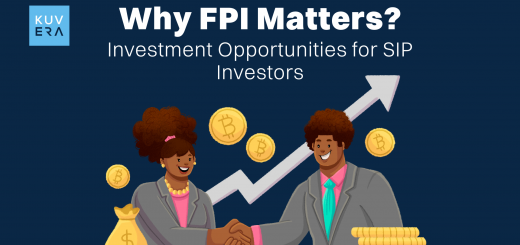So, you really are going to race with the hare, asked the tortoise’s mother. Everyone assumes that the hare is going to win because of its long legs and attained fame, said the tortoise. But not anymore. I shall prove everyone wrong. The tortoise said and left.
What is Active and Passive Investing?
To give you context, we will be talking about active and passive investing. Active investment is when a fund manager manages your mutual fund (pool of stocks). The goal is to outperform the market indices and give you more returns. Passive investing, on the other hand, is when funds mirror the performance of a specific financial index, such as S&P BSE 50 index. They hold the same stocks in proportion to the index they follow. Thus, they are known as Index funds.
What to know more about Index Funds? Click here.
Active investing is like the hare’s side of this story. The fund manager is responsible for stock picking based on market trends and instincts. The fund manager (the hare in our story) is confident that they can outperform the market. Given their professional skill and market knowledge, they should. However, the data says otherwise.
Performance in Equity Large Cap Funds
The S&P Indices Versus Active (SPIVA) Funds India conducted a study on active and passive funds. Their report shows that in 2023, 51.6% of actively managed equity large-cap funds underperformed the S&P BSE 100 index. Underperformance rates dropped to 87.5%, 85.7%, and 62.1% over three-year, five-year, and ten-year periods.
Performance in Equity Mid/Small Cap Funds
Now let’s come to the equity mid/small cap funds. 73.58% of such funds fail to beat the S&P BSE 400 Midsmall cap index. And the data shows a similar trend over longer periods as well. Midsmall cap equity funds over a three-year, five-year, and ten-year period have lagged behind index returns by 60%, 58.14%, and 75.41% respectively. In the composite bonds category, 95.59% of funds failed to make index-worthy returns.
Performance in ELSS Funds
Only 30% of Equity-Linked Savings Scheme (ELSS) funds in India beat the S&P BSE 200 benchmark index. Yet more and more funds fail to beat the index as the years go by.

Performance of Indian Government Bonds
Not even one-fifth of the government bonds could beat the S&P BSE India Government Bond Index. In longer periods, the outperformance rate goes even lower. This index reflects the local-currency-denominated government bonds from India.
Risk-Adjusted Returns
Even in the long term, more than 60% of funds across different fund categories have underperformed. However, these outperformance rates are based on absolute returns. So, let’s look at the risk-adjusted returns. The risks that are considered here are fund section risk and fund selection risk. Here is the table:

So, do actively managed funds give quick and higher-than-index returns? No. More like taking a nap during the race, leading to not outperforming the index returns.
SPIVA Report
The SPIVA Report for India compares a fund’s return with the benchmark’s return. This reflects the particular fund’s investment category. So, it’s like comparing apples with apples that give consistent returns. Coming to our tortoise, the index that gives you steady returns.
However, there is a disclaimer to all investments, “Past performance is no guarantee of future performance”. Two decades of S&P data does not tell you how the market would perform but it certainly points out a pattern over the years. In the active vs passive debate, passive has outperformed in each and every category. So, what justifies the active management fee charged by fund managers is in question. What would you choose- steady passive funds or underperforming active funds?
Interested in how we think about the markets?
Read more: Zen And The Art Of Investing
Watch here: Understanding Index Funds | Expert Insights for Smart Investing
Start investing through a platform that brings goal planning and investing to your fingertips. Visit kuvera.in to discover Direct Plans and Fixed Deposits and start investing today.












